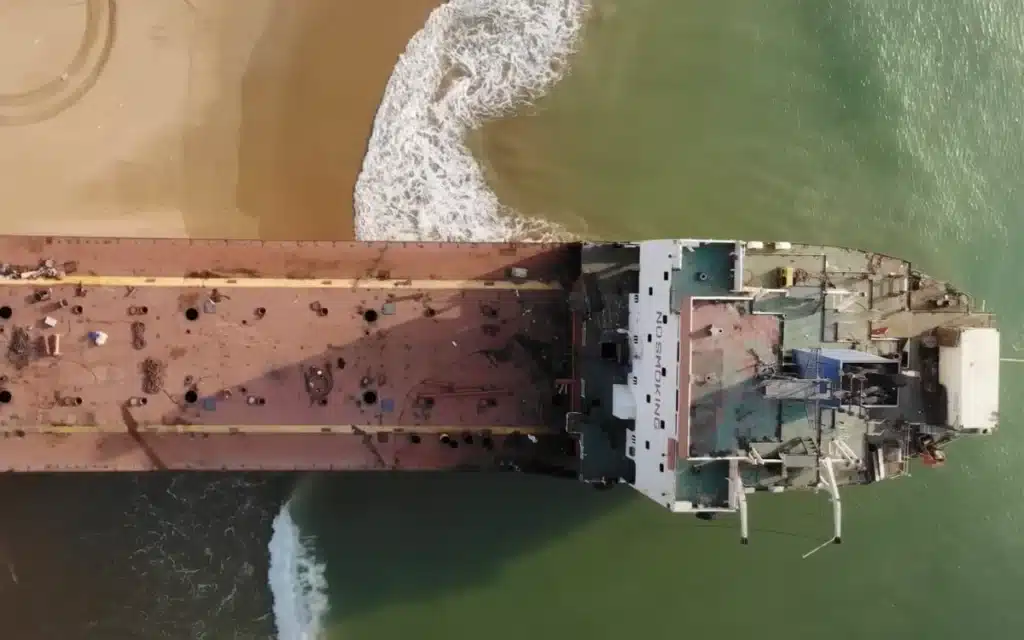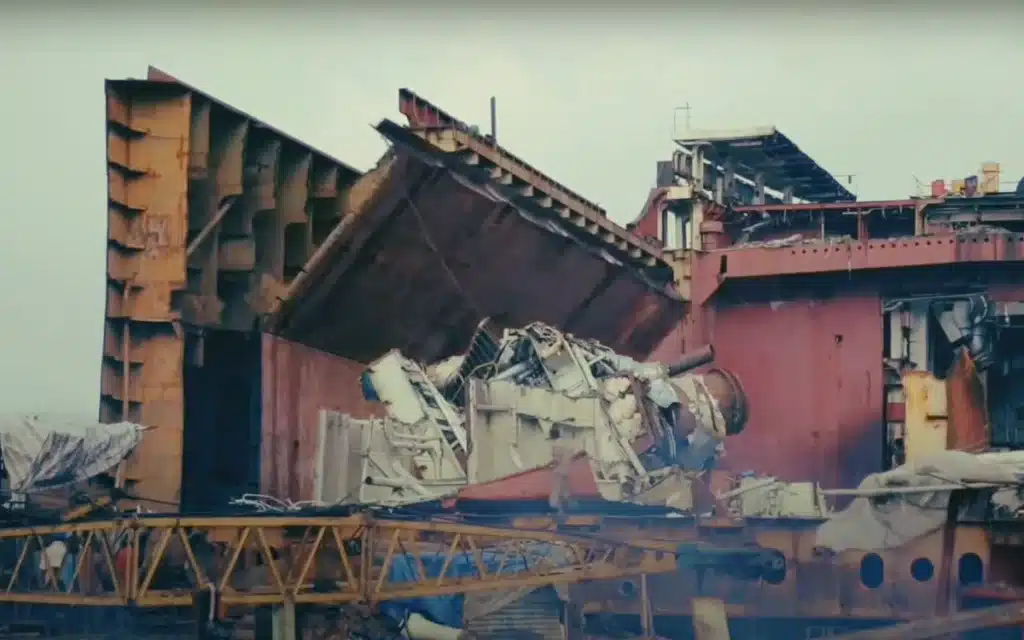Biggest cruise ship graveyard in the world dismantles ships worth millions in steel
Published on Aug 25, 2025 at 6:20 PM (UTC+4)
by Jason Fan
Last updated on Aug 22, 2025 at 3:03 PM (UTC+4)
Edited by
Kate Bain
The cruise ship graveyard of Alang, located in Gujarat, India, is the largest ship-breaking yard in the world.
Stretching along six miles of coast, the facility has become the final resting place for massive ocean liners, including once-luxurious cruise ships that ferried thousands of passengers across seas.
These vessels, some only decades old, are stripped apart piece by piece when they are deemed too old, too costly to maintain, or environmentally inefficient.
What remains is millions of dollars’ worth of steel and reusable material, feeding a vast recycling industry.
VISIT SBX CARS – View live supercar auctions powered by Supercar Blondie
Upgrading a cruise ship is often too expensive
Cruise ships, like all large vessels, have a limited operational lifespan.
After 25 to 30 years of providing guests with all sorts of crazy fun, most cruise ships will be retired, due to rising maintenance costs, outdated technology, and stricter international environmental regulations.
Modern ships are expected to run on cleaner fuels, have advanced wastewater systems, and meet tighter emissions standards.
Unfortunately, these are all criteria that older vessels often fail to meet.
For shipping companies, it is often more cost-effective to retire an older cruise ship than to retrofit it with expensive upgrades.

In fact, you’ll occasionally see abandoned cruise ships lying around, or even listed on Craigslist, because getting rid of a cruise ship can be an expensive affair.
Working in a cruise ship graveyard can be dangerous
If you do choose to dispose of your cruise ship the proper way, the best choice is sending it to a specialized cruise ship graveyard, like the one in Alang.
Once a ship is sent to the Alang facility, the dismantling process begins with beaching the vessel at high tide.
Workers then cut through its steel hull, removing everything from furniture and chandeliers to massive engines and propellers.
The process is labor-intensive and often dangerous, relying on thousands of workers who dismantle the ships manually.

While the industry has been criticized for safety and environmental concerns, it remains a vital part of India’s recycling economy.
The sheer volume of material salvaged from each cruise ship is staggering, although if you’re breaking down cruise ships the size of buildings, it’s perhaps not that surprising.
Steel accounts for the majority of the recovered material, which is melted down and sold to industries across India, feeding construction and manufacturing sectors.
Other valuable components, such as wiring, fixtures, and even life jackets, are auctioned and resold.
Of course, ships are not the only vessels to have ‘graveyards’.
There are many aircraft graveyards across the world that serve various purposes, like storing aircraft with low demand, or scrapping a plane for parts.
You can even find massive car graveyards within the US, where you can find more than a thousand cars just sitting around.
DISCOVER SBX CARS: The global premium car auction platform powered by Supercar Blondie
Jason Fan is an experienced content creator who graduated from Nanyang Technological University in Singapore with a degree in communications. He then relocated to Australia during a millennial mid-life crisis. A fan of luxury travel and high-performance machines, he politely thanks chatbots just in case the AI apocalypse ever arrives. Jason covers a wide variety of topics, with a special focus on technology, planes and luxury.




